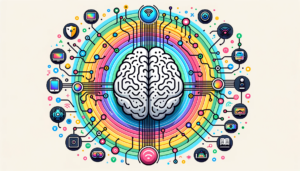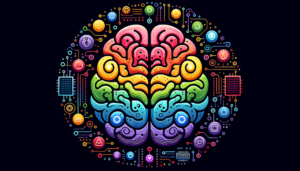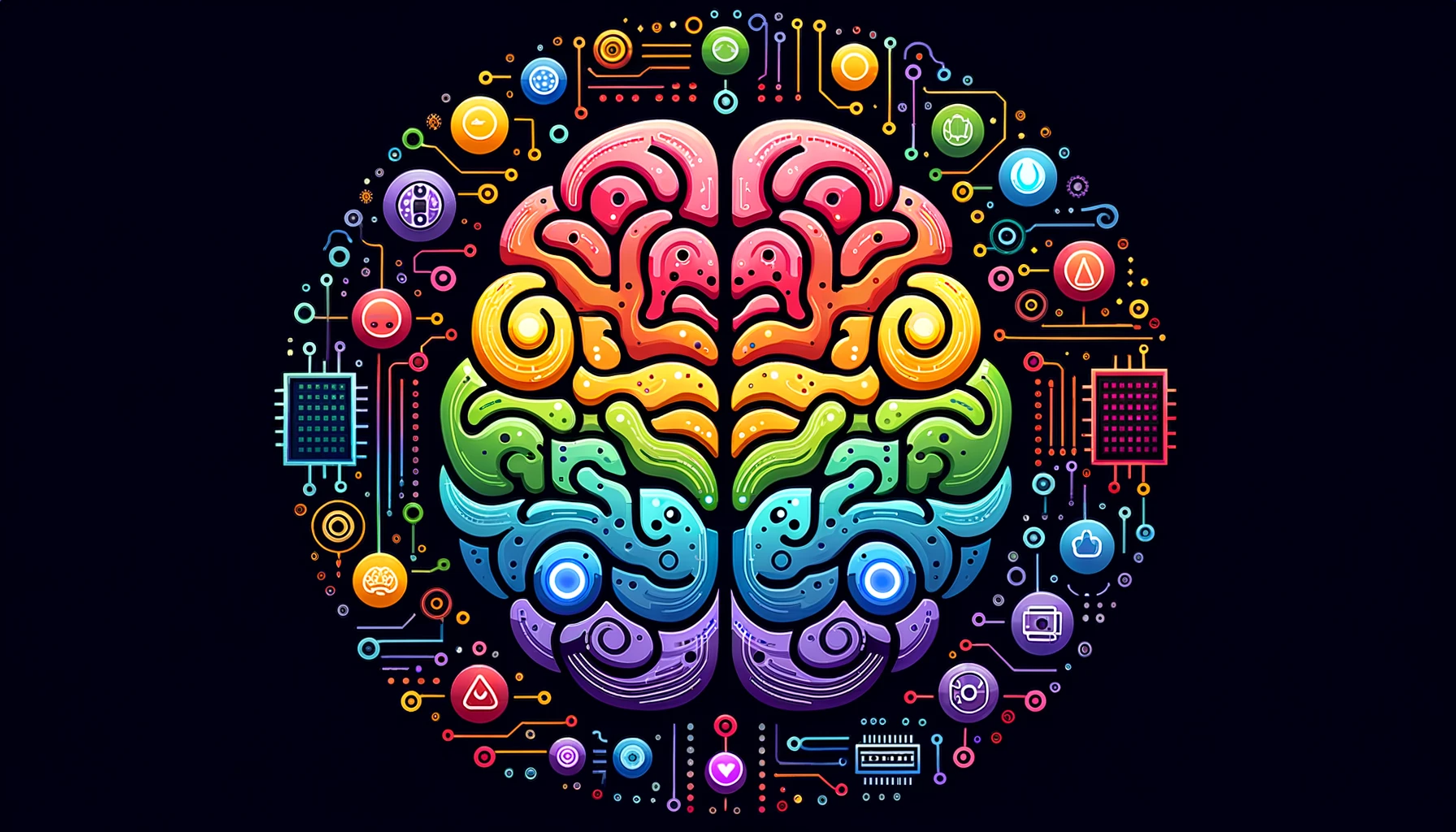In today’s technologically advanced world, it seems there is an app or gadget for almost everything. But what if there was a technology that could actually read and respond to your feelings? That’s where Emotion Recognition Technology steps in. This groundbreaking innovation is revolutionizing how we interact with our devices and each other, as it allows machines to detect and interpret human emotions. Imagine a world where your smartphone can understand if you’re feeling sad and offer comforting messages, or if you’re stressed and recommend relaxation techniques. Emotion Recognition Technology is not only reshaping the way we communicate, but also opening up a whole new world of possibilities for a more empathetic and connected society.
Overview of Emotion Recognition Technology
Emotion Recognition Technology refers to the use of artificial intelligence and machine learning techniques to identify and interpret human emotions from various sources, such as facial expressions, vocal cues, and physiological signals. By understanding and responding to human feelings, this technology enables a more personalized and interactive experience in various fields, including healthcare, education, and marketing.
Definition of Emotion Recognition Technology
Emotion Recognition Technology encompasses a range of algorithms and software that are designed to recognize, interpret, and respond to human emotions. It utilizes advanced techniques, such as computer vision, natural language processing, and signal processing, to analyze emotional cues and provide insights into the emotional state of an individual. By deciphering emotional expressions, speech patterns, and physiological responses, this technology can accurately identify emotions such as joy, anger, sadness, and surprise.

Applications of Emotion Recognition Technology
Emotion Recognition Technology has widespread applications across different industries. In healthcare, it assists in mental health treatment, monitors pain levels, and improves patient care. In education, it enhances student engagement, evaluates learning outcomes, and supports special education. In marketing and advertising, it evaluates consumer response, customizes advertisements, and provides insights into brand perception.
History and Development of Emotion Recognition Technology
The development of Emotion Recognition Technology can be traced back to the 1990s when research in the field of affective computing began. Initially, the focus was on recognizing basic emotions from facial expressions. However, with advancements in technology and the emergence of artificial intelligence, emotion recognition systems have become more sophisticated and capable of detecting a wide range of complex emotions.

How Emotion Recognition Technology Works
Emotion Recognition Technology employs various techniques to understand and interpret human emotions. These techniques include analyzing facial expressions, vocal cues, and physiological signals.
Understanding Facial Expressions
Facial expression analysis is one of the most common methods used in Emotion Recognition Technology. By capturing and analyzing facial movements, this technology can detect and interpret emotions. Facial recognition algorithms analyze features such as eyebrow position, mouth shape, and eye movement to determine emotional states accurately.
Analysis of Vocal Cues
Voice analysis is another important aspect of Emotion Recognition Technology. By analyzing speech patterns, tone, and intonation, this technology can identify emotions expressed through vocal cues. The algorithms use linguistic features, such as pitch, intensity, and tempo, to determine emotional states accurately.
Assessment of Physiological Signals
Emotion Recognition Technology also takes into account physiological signals, such as heart rate, skin conductance, and brain activity, to assess emotional states. By monitoring these physiological signals, the technology can detect changes that indicate different emotional experiences. This information provides valuable insights into an individual’s emotional well-being and can contribute to more personalized and effective interventions.
Benefits of Emotion Recognition Technology
Emotion Recognition Technology offers several benefits across various domains.
Improving Human-Computer Interaction
By accurately interpreting human emotions, Emotion Recognition Technology enhances human-computer interaction. It enables systems to respond to users’ emotional states, providing a more personalized and empathetic experience. This technology can also help detect user frustration or engagement levels, allowing for proactive interventions and improving overall user satisfaction.
Enhancing Customer Experience
In the realm of marketing and customer service, Emotion Recognition Technology can significantly enhance the customer experience. By analyzing customer emotions, companies can tailor their products, services, and communication strategies to meet their emotional needs. This technology enables businesses to better understand their customers and create more meaningful and engaging experiences.
Advancing Mental Health Diagnosis
Emotion Recognition Technology has immense potential in the field of mental health diagnosis and treatment. By accurately detecting and monitoring emotional states, this technology can assist clinicians in assessing and treating mental health conditions. It can provide valuable data that supports early intervention, personalized treatment plans, and improved patient outcomes.

Challenges and Limitations of Emotion Recognition Technology
While Emotion Recognition Technology holds great promise, it also faces several challenges and limitations.
Accurate Recognition of Complex Emotions
Emotion Recognition Technology struggles to accurately recognize and interpret complex emotions. While it can often identify basic emotions, such as happiness or sadness, accurately recognizing emotions like envy, contempt, or guilt can be more challenging. The subtlety and complexity of these emotions make their detection and interpretation a more difficult task.
Cultural and Contextual Factors
Emotion recognition is heavily influenced by cultural and contextual factors. Different cultures express emotions in unique ways, making it challenging to create a universal emotion recognition system. Moreover, emotions can vary based on the context in which they occur, further complicating the accurate interpretation of emotional cues.
Privacy and Ethical Concerns
The use of Emotion Recognition Technology raises concerns regarding privacy and ethical considerations. Collecting and analyzing personal emotional data raises questions about consent, data protection, and potential misuse of the information. To ensure the responsible and ethical use of this technology, it is crucial to establish robust frameworks and guidelines that protect individuals’ privacy and rights.
Applications of Emotion Recognition Technology
Emotion Recognition Technology finds applications across various industries, including healthcare, education, and marketing.
In Healthcare
Emotion Recognition Technology has numerous applications in healthcare settings.
Assisting in Mental Health Treatment
By continuously monitoring patients’ emotions, this technology can aid in the assessment and treatment of mental health conditions. It helps clinicians track progress, identify triggers, and personalize treatment plans to ensure optimal patient care.
Monitoring Pain Levels
Emotion Recognition Technology can also assist in monitoring pain levels, particularly in individuals who struggle to communicate their discomfort verbally. By analyzing facial expressions and physiological signals, it helps healthcare providers assess pain intensity and tailor pain management strategies.
Improving Patient Care
Emotion Recognition Technology can improve overall patient care by enabling healthcare providers to understand patients’ emotional well-being. By detecting emotional distress or anxiety, healthcare professionals can provide timely support, enhance patient satisfaction, and promote a more positive healthcare experience.
In Education
Emotion Recognition Technology has the potential to revolutionize education by enhancing the learning experience.
Enhancing Student Engagement
By analyzing students’ facial expressions and emotional responses, this technology can gauge their level of engagement during learning activities. This feedback can help educators make instructional adjustments, ensure students’ active participation, and create a more engaging and effective learning environment.
Evaluating Learning Outcomes
Emotion Recognition Technology can also be used to assess learning outcomes and provide valuable insights into students’ emotional experiences during the learning process. By understanding the emotional challenges students face, educators can tailor teaching strategies to meet their needs, thereby improving learning outcomes.
Supporting Special Education
In the realm of special education, Emotion Recognition Technology can play a crucial role in supporting individuals with learning disabilities or emotional difficulties. By providing real-time feedback on emotional states and responses, this technology enables educators to offer personalized interventions and create inclusive learning environments.
In Marketing and Advertising
Emotion Recognition Technology has significant implications for marketing and advertising strategies.
Evaluating Consumer Response
By analyzing consumers’ emotional responses to advertisements, products, or brand interactions, businesses can assess the effectiveness of marketing campaigns. This technology provides valuable data that helps companies understand consumer preferences, tailor their messaging, and optimize their marketing strategies.
Customizing Advertisements
Emotion Recognition Technology enables companies to deliver personalized advertisements based on individuals’ emotional profiles. By understanding consumers’ emotional states and preferences, businesses can create more targeted and impactful advertisements that resonate with their target audience.
Gaining Insights into Brand Perception
Emotion Recognition Technology allows businesses to gain insights into how their brand is perceived by analyzing consumers’ emotional reactions to their products or services. By understanding the emotional connections consumers have with their brand, companies can make informed decisions to strengthen brand reputation and loyalty.
Emotion Recognition Technology in Healthcare
Emotion Recognition Technology has the potential to revolutionize healthcare practices and improve patient outcomes.
Assisting in Mental Health Treatment
Emotion Recognition Technology can play a vital role in assisting mental health treatment. By continuously monitoring patients’ emotions, this technology can help clinicians assess treatment progress, identify early warning signs, and personalize interventions to meet individual needs.
Monitoring Pain Levels
Pain assessment is a critical aspect of healthcare, and Emotion Recognition Technology can aid in this process. By analyzing facial expressions and physiological signals, this technology provides an objective measure of pain intensity, aiding healthcare providers in delivering appropriate pain management strategies.
Improving Patient Care
By understanding patients’ emotional states, Emotion Recognition Technology can improve overall patient care. It enables healthcare providers to detect emotional distress, anxiety, or dissatisfaction, allowing for timely interventions and enhanced patient satisfaction.
Emotion Recognition Technology in Education
Emotion Recognition Technology holds immense potential to transform education and optimize the learning experience for students.
Enhancing Student Engagement
By analyzing students’ emotional responses during learning activities, Emotion Recognition Technology can enhance student engagement. Educators can receive real-time feedback on students’ emotional states and adjust instructional strategies accordingly, promoting active participation and deeper learning.
Evaluating Learning Outcomes
Emotion Recognition Technology can help evaluate learning outcomes by analyzing students’ emotional experiences during the learning process. By understanding the emotional challenges students face, educators can tailor their teaching strategies to address these challenges effectively and improve learning outcomes.
Supporting Special Education
In the realm of special education, Emotion Recognition Technology can provide valuable support to individuals with learning disabilities or emotional difficulties. By monitoring emotional states and responses, this technology helps educators identify specific needs, develop personalized intervention plans, and create inclusive learning environments.
Emotion Recognition Technology in Marketing and Advertising
Emotion Recognition Technology offers exciting opportunities for businesses to enhance marketing and advertising strategies.
Evaluating Consumer Response
By analyzing consumers’ emotional responses to advertisements, products, or brand interactions, Emotion Recognition Technology provides valuable insights into the effectiveness of marketing campaigns. This data enables businesses to understand consumer preferences and optimize their marketing efforts accordingly.
Customizing Advertisements
Emotion Recognition Technology allows businesses to deliver personalized advertisements based on individuals’ emotional profiles. By tailoring advertisements to resonate with consumers’ emotional states and preferences, companies can create more impactful and targeted campaigns.
Gaining Insights into Brand Perception
By analyzing consumers’ emotional reactions to their products or services, businesses can gain insights into how their brand is perceived. This information helps companies make informed decisions to enhance brand reputation, build stronger emotional connections with consumers, and foster brand loyalty.
The Future of Emotion Recognition Technology
The future of Emotion Recognition Technology holds exciting possibilities for further advancements and integration with other fields.
Advancements in Artificial Intelligence
As artificial intelligence continues to evolve, Emotion Recognition Technology is expected to become more accurate and robust. Advancements in deep learning algorithms and neural networks will enable better recognition and interpretation of complex emotions, thus enhancing the technology’s overall effectiveness and reliability.
Integration with Virtual Reality
The integration of Emotion Recognition Technology with virtual reality has the potential to revolutionize various industries. By combining these technologies, it becomes possible to create immersive experiences that respond to users’ emotions in real-time. This integration can have profound implications for fields such as gaming, training simulations, and mental health therapy.
Ethical Considerations for Development and Use
As Emotion Recognition Technology continues to advance, it is essential to address ethical concerns surrounding its development and use. Guidelines and regulations must be established to protect individuals’ privacy, ensure informed consent, and guard against potential misuse of emotional data. Responsible development and deployment of this technology will be crucial to its long-term success and acceptance.
Conclusion
Emotion Recognition Technology has the potential to revolutionize various industries by reading and responding to human feelings. By understanding and interpreting emotions from facial expressions, vocal cues, and physiological signals, this technology enables improved human-computer interaction, enhanced customer experiences, and advancements in mental health diagnosis. While it faces challenges in accurately recognizing complex emotions and accounting for cultural and contextual factors, Emotion Recognition Technology offers significant benefits in healthcare, education, and marketing. With the potential for advancement in artificial intelligence and integration with virtual reality, the future of Emotion Recognition Technology is bright. However, it is essential to address ethical considerations to ensure its responsible development and use. Emotion Recognition Technology has opened up new possibilities for a more empathetic and personalized future, transforming the way we understand and respond to human emotions.













